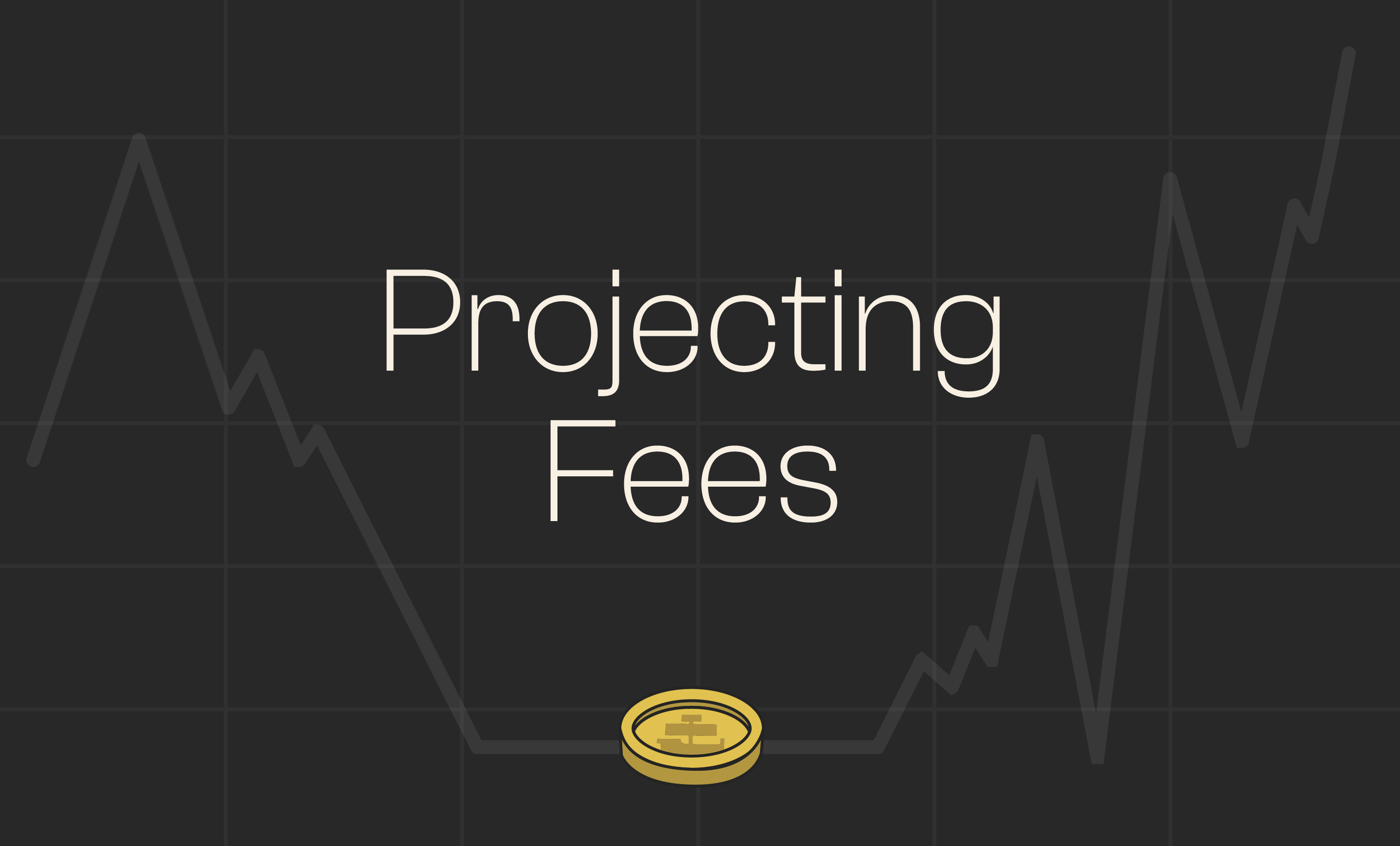Projecting Volumes & Fees

What are Protocol Fees?
Clipper generates Protocol Fees (“PFs”) for AdmiralDAO, which are published by Token Terminal and are also publicly auditable on-chain. To understand how Clipper does so, visit the docs here. Currently, PFs grow protocol-owned liquidity (POL). However, they could be used to grow the DAO Treasury (e.g., its endowment) or any other purpose decided by token holders.
Total Addressable Volumes
Clipper has an enormous opportunity to impact DeFi. This is because annual DEX trade volume is ~$1 trillion, 70% of all trades are blue-chip pairs (e.g., ETH, WBC, USD stablecoins), and 30% of trades are non-toxic (from humans as opposed to bots) such that they are profitable for LPs. Thus, Clipper addresses $210B in volume (and the market is growing).
Total Addressable Protocol Fees
Clipper adds a small spread (e.g., 10bps) to its prices to generate excess returns above the benchmark required by LPs. These excess returns can be captured by the DAO as Protocol Fees. Thus, every $1M volume generates $1k in Protocol Fees. Theoretically, were Clipper to have 100% market penetration, it would process volume of $210B and generate Protocol Fees of $210M [1].
Three ways to grow Volumes & Protocol Fees
1. Grow liquidity (“TVL”)
With more TVL, Clipper will have better prices on larger trades, which will result in greater volumes. This happens quickly because trades flow in from DEX aggregators like 1inch. To estimate this, we analyzed a sample of 10,000 1inch trades at least partially filled by Clipper (e.g., Clipper might fill the first $10k while other DEXs filled the remaining $40k). Clipper currently has ~$10M in TVL which makes it competitive on trades up to $10k. This analysis showed that Clipper filled only 20% of the volume it could have executed with more liquidity. Here are just a few examples of such trades. That means at $50M TVL, Clipper would have processed 5x more volume. Of course, it would also attract new 1inch trades, but we ignore that for simplicity. This means growing TVL will drive higher Protocol Fees.
To get there, here are 5 ways Clipper’s Yields can attract and retain liquidity, including organic yield growth, leveraged looping strategies, market trends, and (of course) liquidity mining. In the past, liquidity mining wasn’t possible because Clipper had no token. Now it does.
2. Integrate into UniswapX & Uni v4
UniswapX is currently in beta. Its model is similar to 1inch Fusion. Based on relative gas usage, Uniswap processes 8-18x more trades than 1inch. As Clipper is integrated into UniswapX, it should generate substantial additional protocol fees. In addition, Clipper can be implemented through a Uni v4 hook, which means it should attract volume from Uniswap’s main router.
3. Become the “Intel Inside” for Solvers and Resolvers
Increasingly, apps and wallets are offering gasless trades to their users from gassless aggregators like 1inch Fusion, CoW Swap, and UniswapX. These gasless aggregators in turn rely on ‘solvers’ or ‘resolvers’ (e.g., Barter) to propose trade routes. These solvers compete for any edge in providing better trade routes. These systems offer professional market makers a chance to compete directly with DeFi liquidity, which leads to adverse selection in the trades that make it through to AMMs. Since Clipper is an FMM that incorporates low-latency off-chain oracles in its price calculations, it is much better able to keep its edge on blue-chip trades while still quoting profitable trades for LPs, all while retaining composability in multihop trades. Thus, solvers competing for edge should have a strategic imperative to integrate Clipper’s smart contracts. Eventually, Clipper may become the “Intel Inside” that powers the upstream supply chain of blue-chip trades–just like your laptops rely on Intel chips and display the “Intel” sticker on your laptop or the NVIDIA sticker for their graphics cards.
Modeling the Scenarios
We modeled this and found that annualized Protocol Fees could grow to $20M.
Conclusion
As the Clipper community succeeds in growing TVL, Clipper has the potential to generate a substantial amount of Protocol Fees, which in turn could increase POL, the AdmiralDAO Treasury, or any other use SAIL token holders vote for. This can ensure the resources necessary to successfully fulfill the DAO’s mission of bringing free and fair markets to the world.
[1] Please note that these projections are entirely speculative and should not be relied upon as any sort of guarantee. They are simply a representation of future potential.

